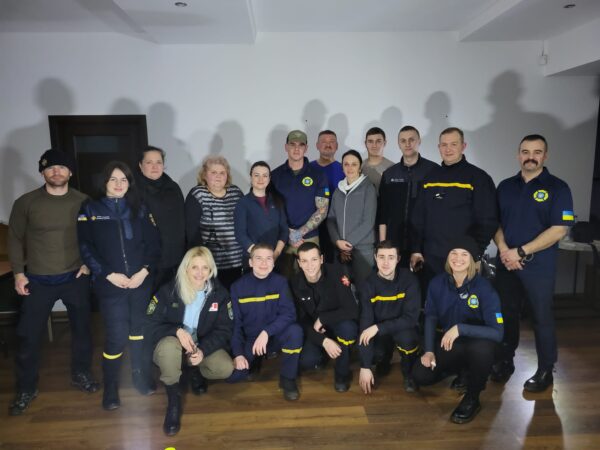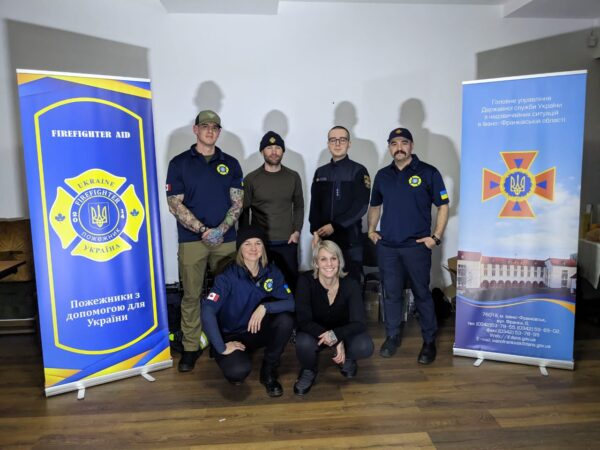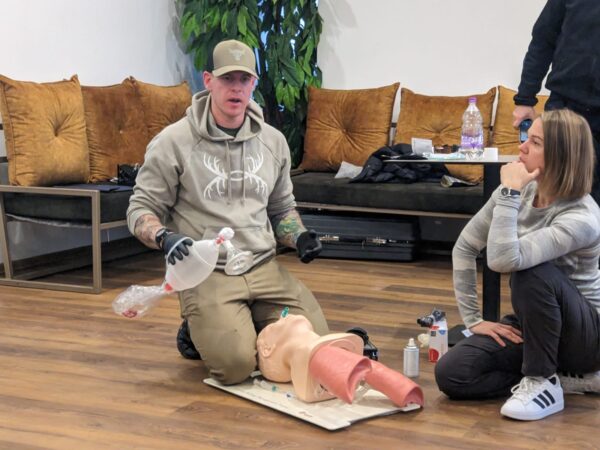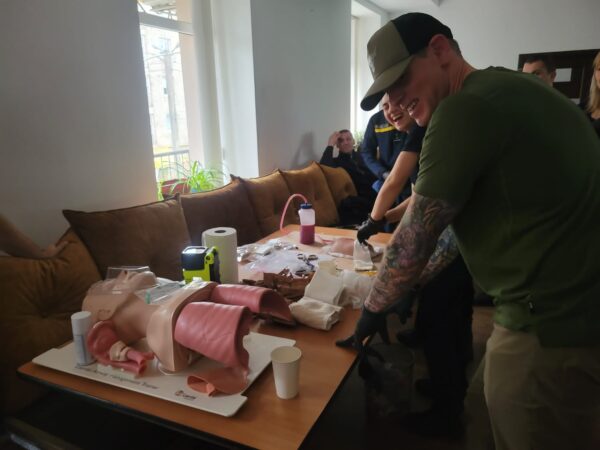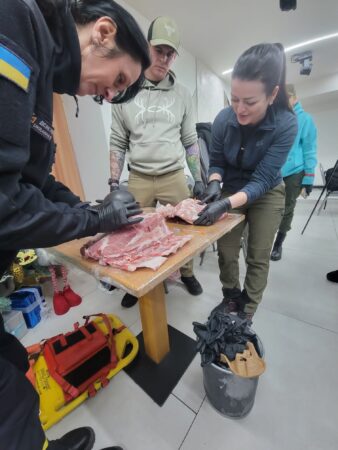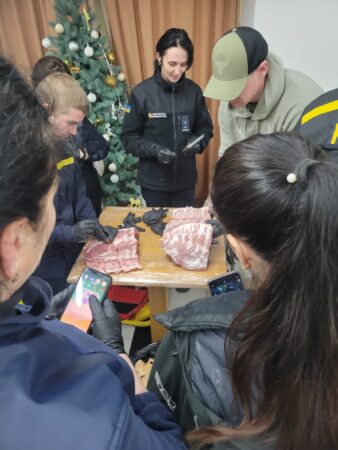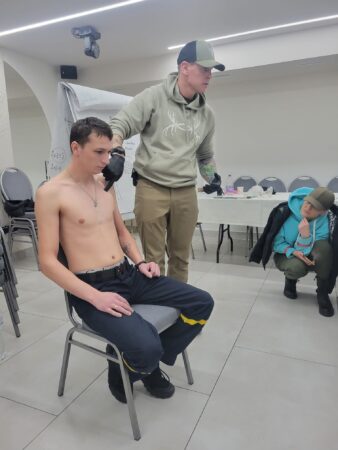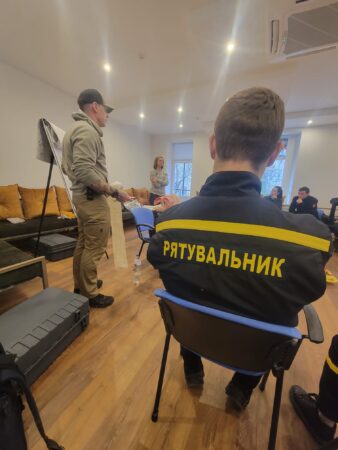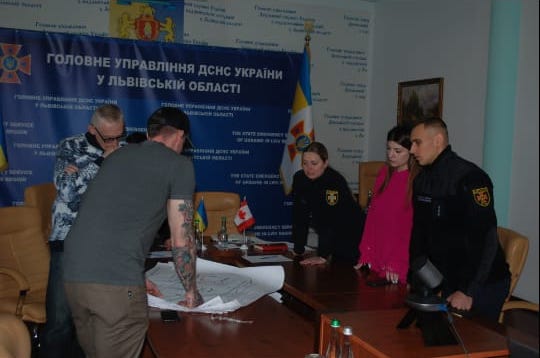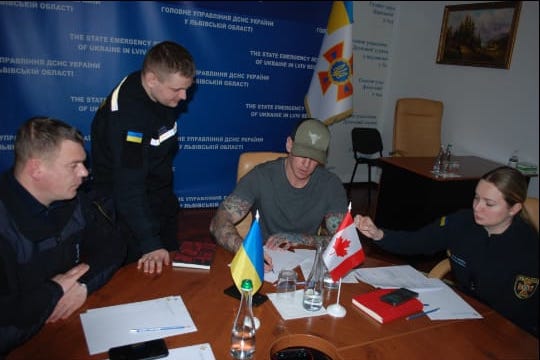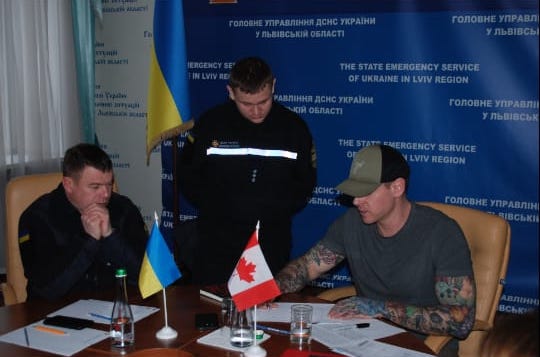
Training in a war zone: Edmonton firefighters working together with Ukrainian first responders
By Brittani Schroeder
Features Training Week canadian firefighter editors pick firefighter training firefighters First Responders training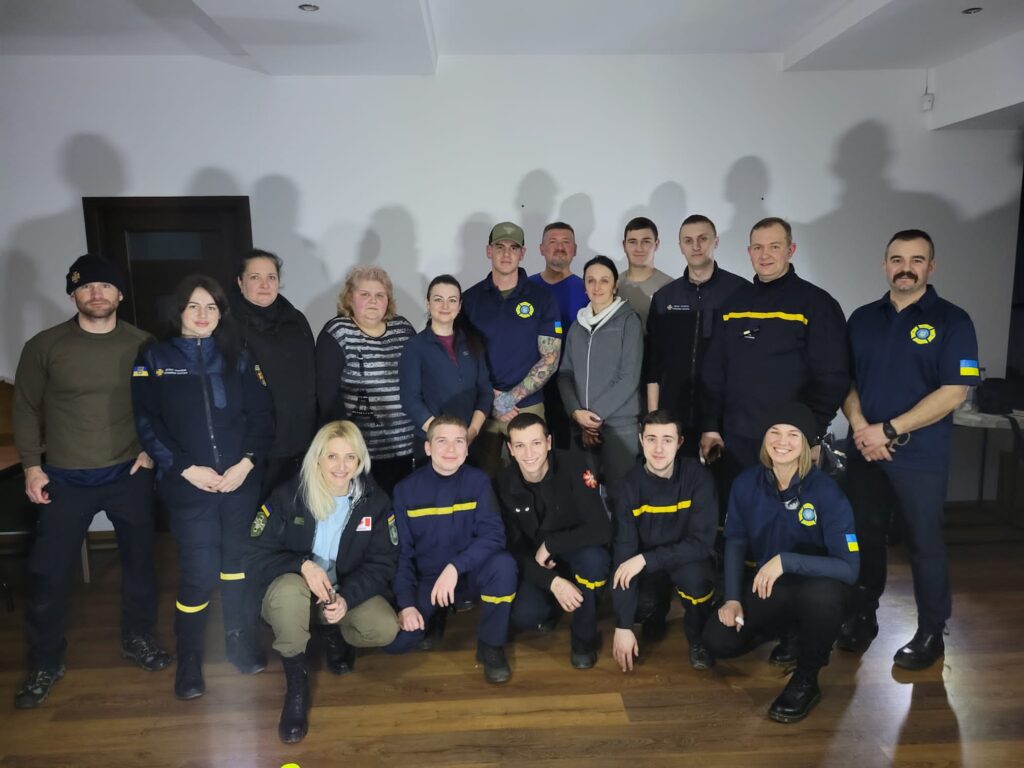 Photo credit: Nelson Bate
Photo credit: Nelson Bate Nelson Bate wanted to be a firefighter for as long as he can remember. He loved the service lifestyle and the excitement it could bring. “It always felt like the right fit. I liked the structure, the organizational aspects and the uniform service,” he said.
Bate grew up on Vancouver Island and joined the army after leaving school. As an infantry soldier, he had one tour in Kandahar, Afghanistan in 2009 before returning home and being posted in Edmonton. After leaving the military, he went to school to become an EMT and a firefighter. He was hired right out of the program, and for the last nine years he has been working as a firefighter with the Edmonton Fire Department. Bate also took the PCP course and has been a medical instructor for the Edmonton’s fire service, delivering Medical First Responder in-house training.
Firefighters aiding Ukraine
Through his career as a firefighter, Bate joined an organization called Firefighter Aid Ukraine, which was founded in 2014. The goal of the organization was to provide under-equipped Ukrainian firefighters with bunker gear and tools. Since 2014, they have been able to ship over 200 tonnes of firefighting equipment and essential supplies to all kinds of agencies in Ukraine.
“The founder, Kevin, went on a trip to Ukraine and toured around with some firefighters and was blown away at some of the old equipment they were using. After being a firefighter in Edmonton and knowing how often equipment is replaced due to NFPA accreditation standards, he started sending over the ‘old’ gear we needed to replace, and it turned into this large initiative,” said Bate. “We have a large Ukrainian community in Edmonton as well, so there are a lot of people here who want to and are willing to help.”
Firefighter Aid Ukraine was the first non-government organization to deliver supplies to Ukraine once the war started in 2022.
The mission
Because of how much equipment the organization had delivered in the past, they became well-connected with the Ukrainian government and the State Emergency Services. “Ukraine identified a need for more medical training because of the invasion and what the first responders were facing. They reached out to Kevin and asked if he could develop a program to train their firefighters and rescuers. That wasn’t really Kevin’s area of expertise, so he reached out to me and another former military member, Steve, since we both had medical backgrounds,” said Bate.
After a lot of discussion, the three men came to the conclusion that the Ukrainian first responders were facing injury patterns on civilians that they normally wouldn’t see unless they were on a battlefield. “Steve and I started looking at options of what we could teach them, and we landed on teaching skills based on what you learn in the NATO standard Tactical Combat Casualty Care – Combat Lifesaver Course, or TCCC-CLS for short.”
Bate and his team taught the course three times over the duration of their mission to Ukraine, training a mix of first responders.
The TCCC-CLS is a hands-on, skills-based course focused on providing immediate interventions for the most common causes of death on the battlefield. This includes things like massive hemorrhage control with tourniquets, homeostatic wound packing and pressure bandages, as well as airway management and needle decompression in the presence of a tension pneumothorax. The program the Canadian team taught to Ukrainian first responders was called the MARCHE assessment, which stands for massive hemorrhage, airway, respiration/chest, circulation, hypothermia, and then the “E” is for everything else.
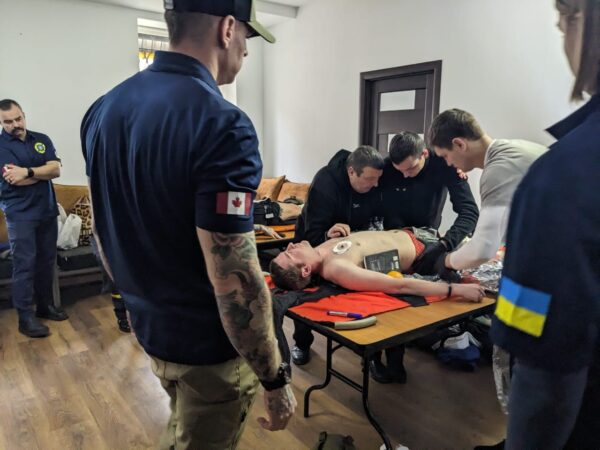
Photo credit: Nelson Bate
“There’s a lot of information out there, a lot of different trainings, so we condensed it and brought it over to Ukraine. We liked to think that we were putting another tool in their toolkit,” said Bate. He also shared that because the training is very hands-on, you need to have equipment. For a lot of the Ukrainian first responders, the equipment that was brought from Canada was completely new to them. “When speaking about toolkits, I asked some of those first responders what they had in theirs, and they said they had some of this, some of that, but nothing like we would have back home. They don’t have a surplus of supplies to be training with.”
When providing the training, the Canadian team sourced out materials from Ukraine so that they could put the theory and knowledge into practice. “We brought in pork ribs to teach needle decompression, and they could feel how the needle would move through tissue and what it felt like to roll over a rib. We placed blown up gloves underneath the pork rib, so they could feel and hear when the pressure released and knew their decompression worked.”
The planning and preparation for a mission like this is substantial. “Four months is about the minimum you want to have to prepare for it. There was a lot of behind-the-scenes work, much more than I originally anticipated, and it was extremely challenging.” Every little detail needed to be ironed out before they left for Ukraine, including letters from the Ukrainian government to even be let in and transported within the country.
Bate and his team taught the course three times over the duration of their mission to Ukraine, training a mix of first responders. The hope was that once these first responders were trained, they could then go and teach their colleagues across the country and maximize the reach. “The team was comprised of three Edmonton firefighters, two instructors and a linguist. The area we headed to was relatively safe, but we had to ready for anything.”
One of the biggest challenges the team faced when they arrived at their destination was the regular blackouts of electricity. “It wasn’t a huge issue, but it was definitely different to what we’re used to at home. It was an obstacle to work around, and it required thought and planning as to how to train without power.”
From a personal standpoint, Bate didn’t feel like at any point he and his team were under threat. “Technically, nowhere in Ukraine is safe right now. We had air raid alerts pretty regularly, sometimes twice a day, and we’d have to run into the basement. But overall, we were well protected where we were.”
Returning to Canada
The mission was “incredibly well-received”, and the team has already been asked to return. They were able to train 72 first responders in their January mission, and when they go back, they’ll be over training 200. “Some of the ‘students’ came up to me at the end of our time there and told me we’d given them the best training they’ve ever had. Ukrainian officials saw how valuable the training was, and they want us back soon.”
Returning from Ukraine, Bate settled back into his home life with his wife and kids, back “into the normal life of chaos and craziness”. But what’s important is that he and the team immediately started planning the next mission to Ukraine. “It’s a waiting game, just hoping the funding comes through in time. We know how important it is to get this information to those working in a war zone, and we’ll be back as soon as we can.”
Print this page
- Learning to fight wildfires on the front line
- VIDEO: First responder training to better serve individuals on the spectrum
